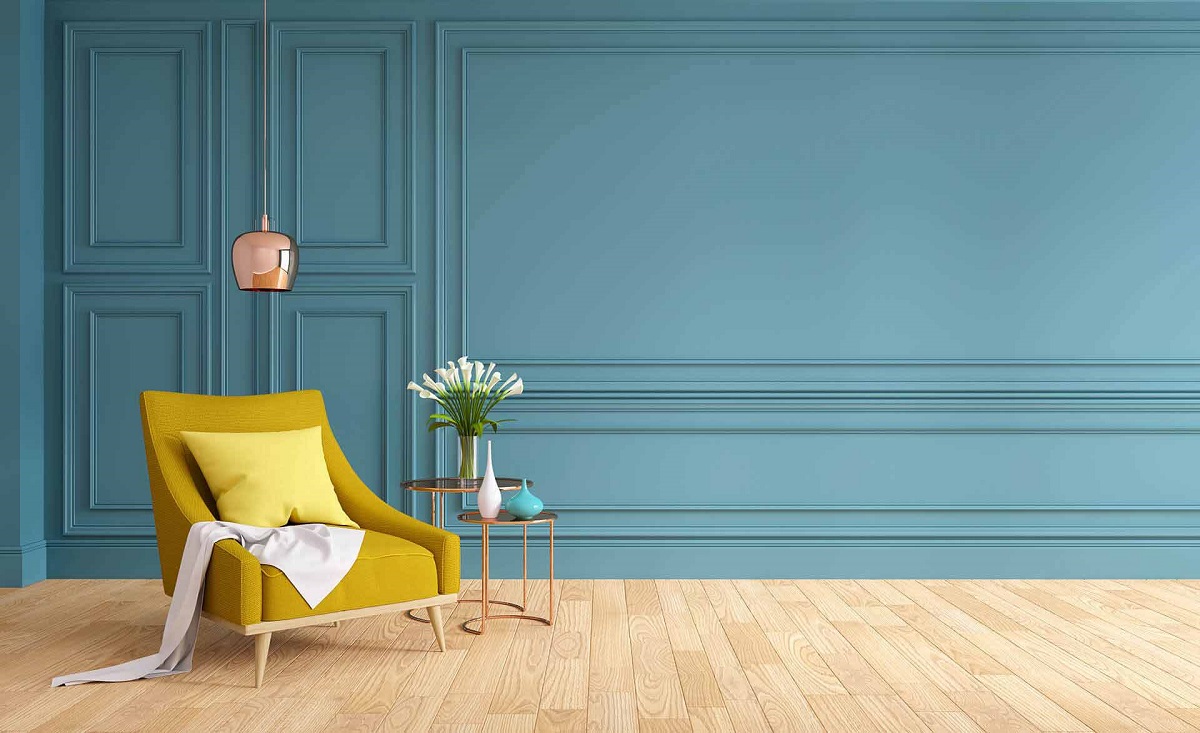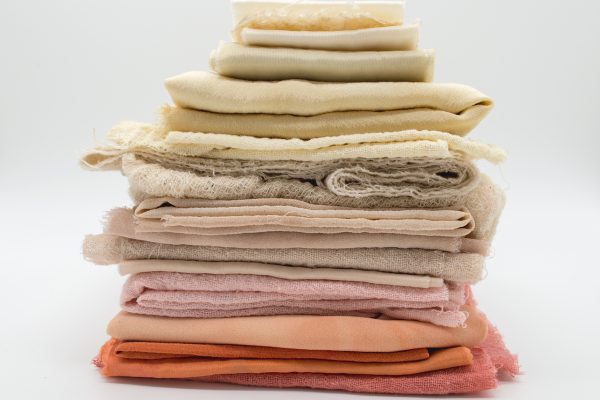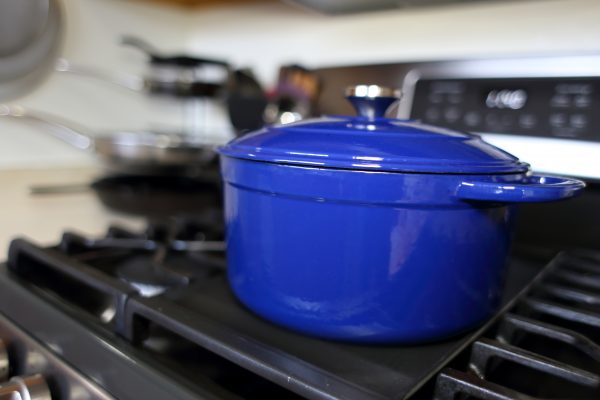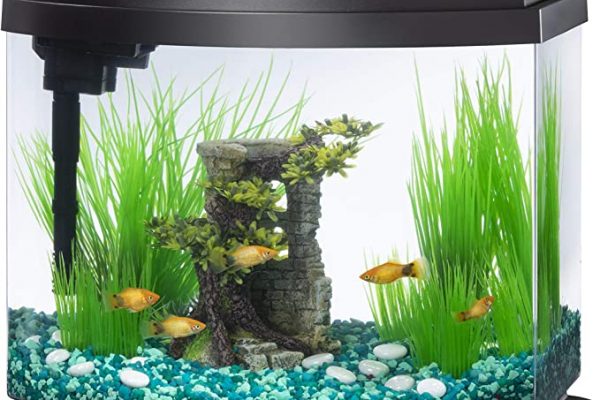Home>Interior Design>Satin Vs Matte Paint: Which Is Better Where?


Interior Design
Satin Vs Matte Paint: Which Is Better Where?
Modified: October 20, 2024
Discover the best choice for your interior design: satin or matte paint. Explore their benefits and find out which one is better suited for different areas in your space.
(Many of the links in this article redirect to a specific reviewed product. Your purchase of these products through affiliate links helps to generate commission for Storables.com, at no extra cost. Learn more)
Introduction
Welcome to the world of interior design, where the right choice of paint can completely transform a space. When it comes to painting your walls, you may come across two popular options: satin and matte paint. Both types have their own unique qualities and applications, making it essential to understand the differences between them. In this article, we’ll dive into the world of satin and matte paint, exploring their pros and cons, as well as where they are best suited.
Satin paint is known for its subtle sheen and smooth finish, while matte paint offers a non-reflective, velvety appearance. Each type has its own benefits and considerations, depending on your specific needs and preferences. By understanding the characteristics of satin and matte paint, you can make an informed decision about which is better for your interior design project.
So let’s delve deeper into the definition of each type, explore their pros and cons, and discover where they are best utilized in your home or commercial space. Whether you’re aiming for a sophisticated look or a cozy ambiance, satin and matte paint are both excellent choices.
Key Takeaways:
- Satin paint is best for high-traffic areas, kitchens, and bathrooms due to its durability and ease of cleaning, while matte paint creates a cozy ambiance and is ideal for living rooms, bedrooms, and accent walls.
- When choosing between satin and matte paint, consider factors such as sheen, durability, room function, imperfections, and personal preference to make an informed decision that aligns with your design goals and the specific requirements of the space.
Read more: Which Is Better: Silk Or Satin Pillowcase?
Definition of Satin and Matte Paint
Satin paint, also known as semi-gloss paint, is characterized by its subtle sheen and smooth finish. It falls somewhere between a flat or matte paint and a high-gloss paint in terms of reflectivity. Satin paint offers a soft shine that can add depth and dimension to your walls. This type of paint is often chosen for its durability and ease of cleaning, making it suitable for high-traffic areas like kitchens, bathrooms, and hallways.
On the other hand, matte paint, sometimes referred to as flat paint, has a non-reflective, velvety appearance. It lacks the shine and sheen found in satin paint, giving walls a more muted and elegant look. Matte paint is popular for its ability to hide surface imperfections, making it ideal for older or textured walls.
While satin paint adds a delicate luster, matte paint absorbs light, producing a more uniform and smooth appearance. It can create a cozy and intimate atmosphere, making it a popular choice for bedrooms, living rooms, and dining areas.
Both satin and matte paint come in a wide range of colors, allowing you to choose the perfect shade to complement your overall design scheme. It’s important to note that the term “satin” and “matte” can vary slightly depending on the paint manufacturer, so it’s always advisable to check the specific product descriptions and recommendations.
Now that we understand the basic definitions of satin and matte paint, let’s explore the pros and cons of each to help you decide which is better for your painting project.
Pros and Cons of Satin Paint
Satin paint offers several advantages that make it a popular choice for many interior designers and homeowners. Here are the pros and cons of using satin paint:
Pros of Satin Paint:
- Smooth and Subtle Sheen: Satin paint provides a gentle shine that adds a touch of elegance and sophistication to any room. It offers a smooth finish and reflects light in a way that enhances the color and depth of your walls.
- Durable and Easy to Clean: One of the significant advantages of satin paint is its durability. It is more resistant to scuffs, stains, and moisture compared to flat or matte finishes, making it suitable for high-traffic areas. Additionally, satin paint is relatively easy to clean, as most marks can be wiped away with a damp cloth or sponge.
- Great for Trim and Woodwork: Satin paint is an excellent choice for painting trim, doors, and other woodwork. Its subtle sheen helps to highlight these architectural features and adds a touch of refinement to the overall design.
- Reflects Some Light: Unlike flat or matte paint, satin paint reflects a moderate amount of light, which can help to brighten up a room and make it feel more spacious.
Cons of Satin Paint:
- Shows Imperfections: The slight sheen of satin paint can highlight any imperfections on your walls, such as bumps, cracks, or uneven textures. Proper surface preparation, including sanding and filling, is essential to achieve a smooth and flawless finish.
- Application Challenges: Satin paint can be more challenging to apply compared to flat or matte paint. It requires careful brush or roller technique to ensure even coverage and avoid visible brush marks or streaks. Proper ventilation is also crucial, as satin paint tends to dry more slowly than flat finishes.
- More Expensive: Satin paint is typically more expensive than flat or matte paint due to its increased durability and quality. If you have a large area to paint, the cost of satin paint can add up quickly.
Now that we’ve explored the pros and cons of satin paint, let’s move on to the advantages and disadvantages of matte paint to see how they compare.
Pros and Cons of Matte Paint
Matte paint, also known as flat paint, offers a unique set of advantages and disadvantages. Let’s take a look at the pros and cons of using matte paint:
Pros of Matte Paint:
- Elegant and Calm Appearance: Matte paint provides a non-reflective, velvety finish that exudes elegance and creates a calm ambiance. It can give your space a sophisticated and refined look.
- Hides Imperfections: One of the main advantages of matte paint is its ability to hide surface imperfections. This makes it an excellent choice for walls with minor flaws, such as uneven textures or small cracks.
- Natural and Soft Look: Matte paint enhances the natural texture of your walls, allowing them to appear soft and subtle. It adds a touch of warmth and depth to your space.
- No Glare: As matte paint doesn’t reflect much light, there is minimal glare or shine on the walls. This can be especially beneficial in rooms where you want to minimize distractions, such as home theaters or bedrooms.
Cons of Matte Paint:
- Less Durable: Matte paint is generally less durable compared to satin or semi-gloss finishes. It can be prone to scuffs, stains, and marks, and may require more frequent touch-ups or repainting in high-traffic areas.
- Difficult to Clean: Due to its porous nature, matte paint can be more challenging to clean compared to finishes with a higher sheen. Stains and marks may require more effort and special cleaning products to remove without damaging the paint.
- Not Suitable for Moisture-Prone Areas: Matte paint is not recommended for areas with high humidity or moisture, such as bathrooms or kitchens. These environments can cause the paint to blister or peel over time.
- More Challenging Application: Matte paint can be less forgiving when it comes to application. It requires careful surface preparation and a smooth, even application technique to avoid visible brush or roller marks.
Now that we’ve examined the pros and cons of both satin and matte paint, let’s explore where each type is recommended to help you make the right choice for your specific design needs.
Where Satin Paint is Recommended
Satin paint is a versatile option that can be used in various areas of your home or commercial space. Here are some of the recommended applications for satin paint:
1. High-Traffic Areas:
Satin paint’s durability and ease of cleaning make it an excellent choice for high-traffic areas such as hallways, entryways, and staircases. These areas often experience more wear and tear, and satin paint can withstand frequent cleaning and resist scuffs and stains.
2. Kitchens and Bathrooms:
Given the moisture-prone nature of kitchens and bathrooms, satin paint is highly recommended for these spaces. Its water resistance makes it more resistant to damage caused by humidity, steam, and occasional splashes. Satin paint can be easily wiped clean, making it ideal for areas with higher moisture levels.
3. Trim and Woodwork:
Satin paint works exceptionally well for trim, doors, and other woodwork. Its subtle sheen helps to highlight these architectural features, adding a touch of sophistication and elegance to your space.
4. Kid’s Rooms and Playrooms:
If you have children, satin paint can be a smart choice for their bedrooms, playrooms, or any areas where little ones spend a lot of time. This type of paint can withstand the inevitable stains and marks that come with active kids, making them easier to clean and maintain.
Read more: Porcelain vs Ceramic Tile: Which Is Better
5. Furniture and Cabinetry:
If you plan to paint furniture or cabinetry, satin paint is an excellent option. Its durability and smooth finish allow for easy cleaning and make your pieces more resistant to everyday wear and tear.
Keep in mind that the specific recommendations may vary depending on the manufacturer and the product’s formulation. Always check the instructions and recommendations provided by the paint manufacturer for the best results.
Now that we’ve explored where satin paint is recommended, let’s move on to where matte paint shines.
Where Matte Paint is Recommended
Matte paint, with its non-reflective and velvety appearance, is well-suited for several areas in your home or commercial space. Here are some recommended applications for matte paint:
1. Living Rooms and Bedrooms:
Matte paint can create a cozy and intimate atmosphere in living rooms and bedrooms. Its soft, muted look adds a touch of elegance and sophistication to these spaces, allowing you to create a relaxing and inviting environment.
2. Accent Walls:
If you want to highlight a specific area or wall in your space, matte paint works exceptionally well for accent walls. Its non-reflective surface allows the color to take center stage, creating a focal point that adds visual interest and depth.
3. Art Galleries and Exhibition Spaces:
Matte paint is often used in art galleries and exhibition spaces to ensure that the focus remains on the artwork. Its low reflectivity minimizes glare and allows viewers to fully appreciate the colors and details of the artwork on display.
4. Home Theaters and Media Rooms:
For spaces where you want to minimize distractions and create optimal viewing conditions, matte paint is an excellent choice. Its non-reflective nature helps to reduce glare from screens, allowing for a more immersive and enjoyable entertainment experience.
5. Walls with Imperfections:
Matte paint is ideal for walls with imperfections, such as minor cracks, bumps, or uneven textures. Its ability to conceal these flaws and create a smooth, uniform appearance makes it a popular choice for older homes or walls that haven’t been perfectly finished.
It’s important to carefully consider the lighting conditions in each space when choosing matte paint. In rooms with limited natural light, matte paint can create a moody and cozy atmosphere. However, in well-lit rooms, it may make the space feel darker. Be sure to test paint samples in your specific lighting conditions to ensure you achieve the desired effect.
Now that we’ve explored where matte paint is recommended, let’s move on to the factors you should consider when choosing between satin and matte paint.
Factors to Consider When Choosing Between Satin and Matte Paint
Choosing between satin and matte paint ultimately depends on several factors, including your design goals, the specific area you’re painting, and personal preferences. Here are some key factors to consider when deciding between satin and matte paint:
Read more: Linoleum Vs Vinyl Flooring: Which is Better?
1. Sheen and Aesthetic:
Consider the overall look and feel you want to achieve in the space. Satin paint offers a subtle sheen that adds a touch of sophistication and reflects light to enhance the color and depth of your walls. Matte paint, on the other hand, provides a non-reflective, velvety appearance that creates a calm and elegant ambiance.
2. Durability and Maintenance:
Think about the level of wear and tear the painted surface will experience. Satin paint is generally more durable and easier to clean than matte paint. It can withstand frequent cleaning and is more resistant to scuffs and stains. Matte paint, while more prone to marks and stains, can be easily touched up if needed.
3. Room Function and Lighting:
Consider the purpose of the room and the lighting conditions. Satin paint is recommended for high-traffic areas, bathrooms, and kitchens due to its durability and water resistance. Matte paint is well-suited for living rooms, bedrooms, and areas where you want to create a cozy and intimate atmosphere. Keep in mind that matte paint can make a space appear darker in well-lit rooms.
4. Surface Imperfections:
If your walls have minor imperfections like bumps or cracks, matte paint can help to hide them. Its non-reflective nature conceals surface flaws and allows for a more uniform appearance. Satin paint, on the other hand, can highlight imperfections due to its slight sheen.
5. Personal Preference:
Your personal preference and style play a significant role in choosing between satin and matte paint. Consider what appeals to you aesthetically and the mood you want to create in the space. Take into account your overall design scheme and how the paint choice will harmonize with the other elements in the room.
It’s always a good idea to test paint samples on the actual surface and observe how they look under different lighting conditions. This will help you make a more informed decision and ensure that you achieve the desired result.
To summarize, consider the sheen and aesthetic, durability and maintenance, room function and lighting, surface imperfections, and your personal preference when selecting between satin and matte paint.
Now that we’ve explored the factors to consider, you’re equipped to make an informed decision for your painting project.
Conclusion
Choosing between satin and matte paint can make a significant impact on the overall look and feel of your space. Both options have their own unique qualities and applications, making it essential to consider various factors when making your decision.
Satin paint, with its subtle sheen and smooth finish, is durable, easy to clean, and great for high-traffic areas like kitchens and bathrooms. It adds a touch of elegance and reflects light in a way that enhances the color and depth of your walls. Satin paint is also ideal for trim and woodwork, creating a refined and sophisticated look.
On the other hand, matte paint, with its non-reflective and velvety appearance, creates a calm and cozy ambiance. It effectively camouflages surface imperfections and is perfect for living rooms, bedrooms, and accent walls. Matte paint adds an elegant touch to any space and is recommended for areas where minimal glare and distractions are desired.
When choosing between satin and matte paint, consider factors such as sheen and aesthetic, durability and maintenance, room function and lighting, surface imperfections, and personal preference. By weighing these factors, you can make an informed decision that aligns with your design goals and the specific requirements of the space.
Remember to test paint samples on the actual surface and observe how they look under different lighting conditions to ensure you achieve the desired effect.
Whether you opt for the subtle sheen of satin paint or the velvety elegance of matte paint, both choices can create stunning results. So go ahead, unleash your creativity, and transform your space with the perfect paint finish.
Frequently Asked Questions about Satin Vs Matte Paint: Which Is Better Where?
Was this page helpful?
At Storables.com, we guarantee accurate and reliable information. Our content, validated by Expert Board Contributors, is crafted following stringent Editorial Policies. We're committed to providing you with well-researched, expert-backed insights for all your informational needs.










0 thoughts on “Satin Vs Matte Paint: Which Is Better Where?”